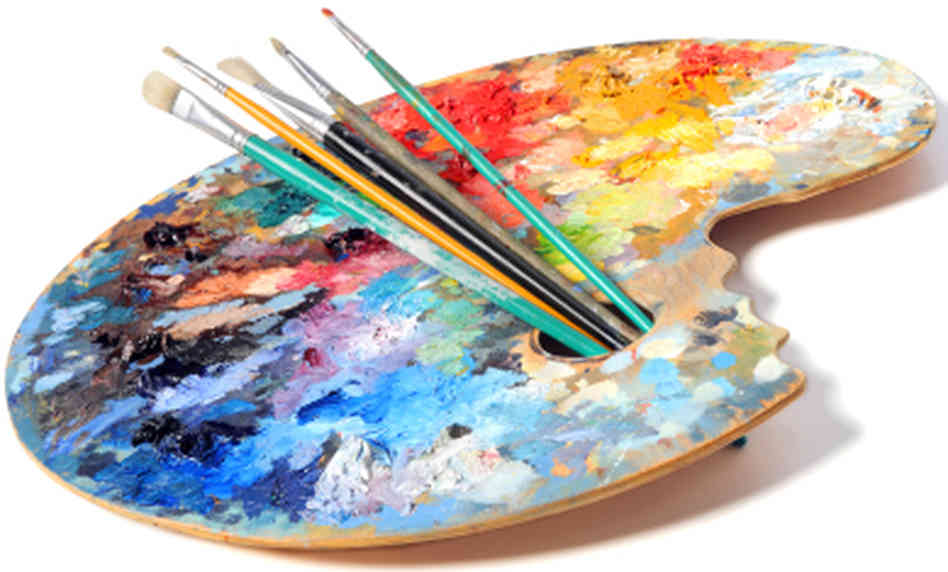Assessing the Social Influence of Trump Art on Modern Artistic Motions
Looking Into the Diverse Globe of Artistic Expression: From Surrealism to Abstract Realistic Look
In the world of imaginative expression, from the dreamlike landscapes of surrealism to the complex play of light and type in abstract realism, artists have actually continuously pushed the boundaries of imagination and imagination. Each motion holds an unique lens with which the world is watched and analyzed, using a look into the depths of human feeling, understanding, and believed. As we discover the diverse world of art, we exist with a tapestry of styles, strategies, and viewpoints that test our understanding and provoke consideration. The journey via these varied types of creative expression promises to unwind a rich tapestry of visual narration and intellectual inquiry that captivates the mind and mixes the soul.
Surrealism: Unleashing the Subconscious
Surrealism, a progressive creative motion of the 20th century, delved right into the midsts of the subconscious, introducing a globe of dream-like images and unusual associations. Led by musicians like Salvador Dali, René Magritte, and Joan Miró, Surrealism sought to challenge the conventional means of seeing and comprehending art. Via methods such as automatism and dream evaluation, Surrealist musicians aimed to take advantage of the subconscious mind to reveal concealed truths and wishes.
Among the crucial elements of Surrealism was the focus on the unreasonable and the uncanny. By combining unforeseen aspects in their works, Surrealist artists aimed to develop a feeling of disorientation and surprise in the viewer. This disruption of logic and factor was suggested to provoke a much deeper expedition of the subconscious and the secrets of the human subconscious.
Abstract Realism: Redefining Perception
Challenging traditional creative limits, Abstract Realistic look redefines assumption with the blend of identifiable components with abstract kinds. This cutting-edge approach to art incorporates the representational accuracy of realism with the imaginative liberty of abstraction, supplying customers an unique visual experience that triggers them to examine their perception of truth.
In Abstract Realistic look, musicians strive to record the significance of their topics while additionally infusing their job with a sense of depth and intricacy via abstract elements. By blending the accustomed to the unknown, these musicians invite target markets to engage with their items on several levels, motivating them to check out the nuances of color, appearance, and form.

Cubism: Fragmentising Truth
Making use of geometric kinds and fragmented perspectives, Cubism transformed the artistic depiction of reality in the early 20th century. This technique not only deconstructed truth however likewise stressed the flatness of the canvas, leading the way for future abstract art motions.

Cubism can be categorized into 2 major phases: Analytical Cubism, characterized by monochromatic color pattern and detailed, fragmented types; and Synthetic Cubism, which incorporated collage aspects and brighter colors into the make-ups. With these unique phases, Cubism affected not only painting however likewise layout, design, and sculpture. trump art. Its influence reverberated throughout the art world, motivating musicians to discover this explore new ways of representing the world and translating around them
Expressionism: Feelings on Canvas
Exploring the midsts of human emotions with expressive and vivid brushstrokes, Expressionism arised as a profound imaginative activity in the early 20th century. Unlike previous art activities that focused on illustrating the exterior world, Expressionism delved right into the inner realm of the musician's mind, aiming to stimulate raw emotions and prompt natural reactions from customers.
Expressionist musicians, such as Edvard Munch, Egon Schiele, and Emil Nolde, declined conventional notions of appeal and realistic look for misshaping type and shade to communicate subjective sensations. The usage of exaggerated brushwork, strong shades, and altered figures helped develop a sense of anxiousness, alienation, or enthusiasm in their works.
One of one of the most famous instances of Expressionism is Munch's "The Scream," which catches the intense anxiety and misery of modern life through its swirling, distorted number versus a blood-red skies. Via their mentally billed jobs, Expressionist musicians sought to test traditional artistic standards and give a window right into the turbulent midsts of the human spirit.
Contemporary Art: Developing Point Of Views

Among the defining characteristics of modern art is its consistent development and capability to adapt to altering cultural landscapes. Musicians are increasingly including innovation right into their practice, obscuring the lines in between the physical and digital realms. This fusion of tools permits for ingenious ways of storytelling and engaging with audiences this hyperlink in an extra interactive way.
Moreover, modern art commonly works as a system for social discourse, dealing with pushing issues such as identity, national politics, and the environment. Artists are using their job to prompt and spark important conversations thought, clarifying the complexities of the globe we reside in. As point of views continue to progress, contemporary art stays a influential and vibrant force in forming our cultural landscape.
Verdict
In conclusion, the world of imaginative expression encompasses a variety of movements and designs, each with its very own one-of-a-kind technique to conveying significance and feeling. From surrealism's exploration of the subconscious to abstract realism's redefining of perception, and from cubism's fragmentation of fact to expressionism's representation of emotions, art remains to progress and test point of views - trump art. Contemporary art mirrors the ever-changing globe we reside in, supplying brand-new ways to interpret and recognize the intricacies of our truth
As we check out the multifaceted world of art, we are provided with a tapestry of styles, strategies, and viewpoints that test our understanding and provoke contemplation. Its influence reverberated throughout the art world, motivating artists to explore brand-new methods of representing the world and analyzing around them.
